Mexico is one of the most fascinating countries in the world, rich with culture, history, cuisine, and natural beauty. While many travelers flock to its sun-soaked beaches and luxurious all-inclusive resorts, there’s so much more to discover. From ancient civilizations to groundbreaking inventions, these interesting facts about Mexico will give you a new appreciation for this vibrant nation.
Fun Facts About Mexico
Whether you’re planning a trip or simply curious, these fun facts about Mexico will show you the depth and diversity of this North American gem. Let’s dive into some surprising Mexican facts that go far beyond margaritas and maracas.
1. Its Name Is Not What You Think
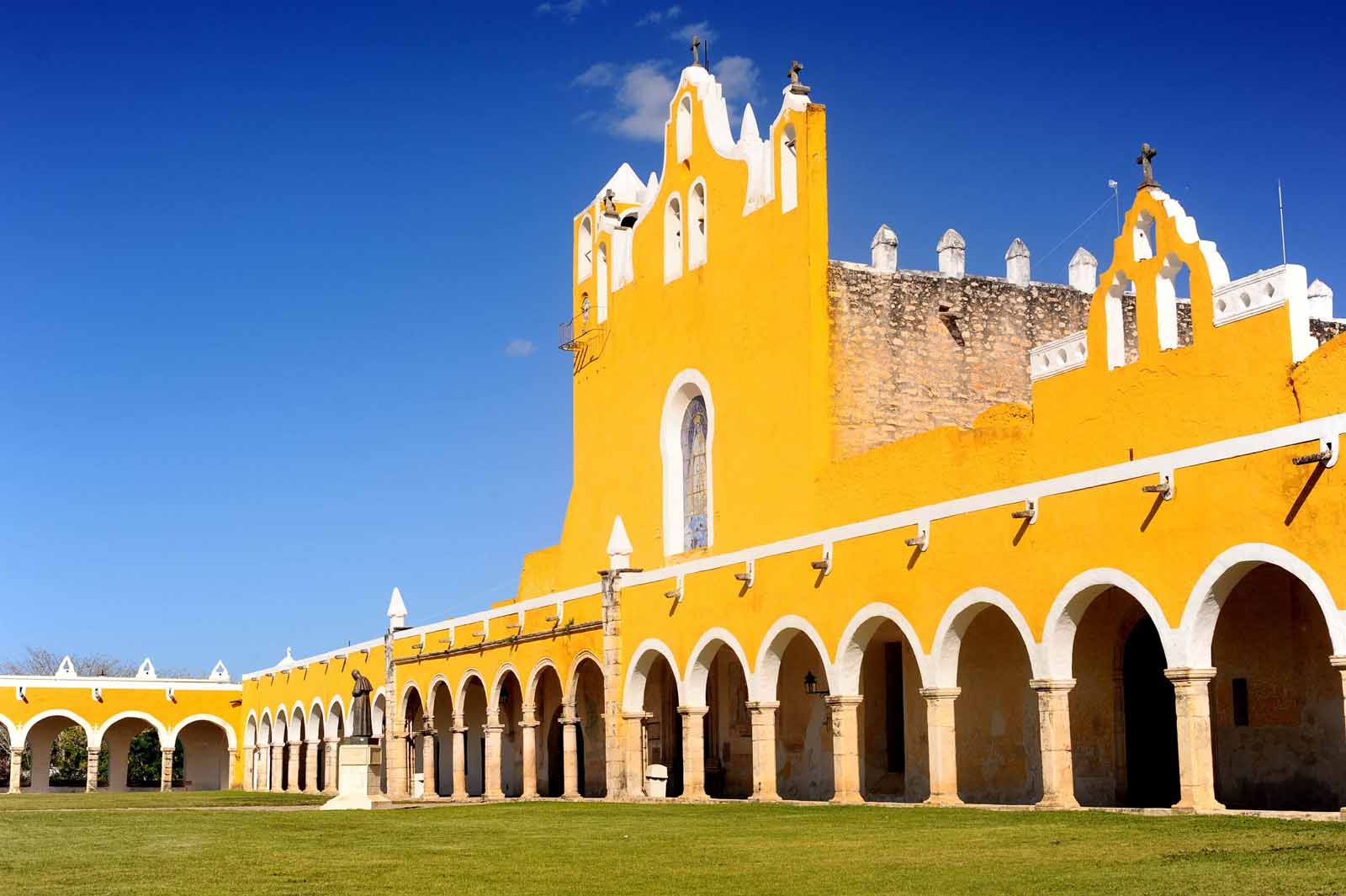
You may be surprised to learn that Mexico isn’t the country’s full name. Officially, it’s called the United Mexican States (Estados Unidos Mexicanos). Much like the United States of America, it is made up of 31 states and a Federal District. Each state has its own set of regulations and systems of Mexican law.
Until 2016, Mexico City was officially the Federal District (Distrito Federal). It’s now recognized as a separate entity with the same rights and responsibilities as the states. Mexico City is not only the capital, but also the largest city in the country and one of the largest in the world. This federal structure reflects the country’s complex governance and regional diversity.
2. Mexico Is More Than a Beach Destination
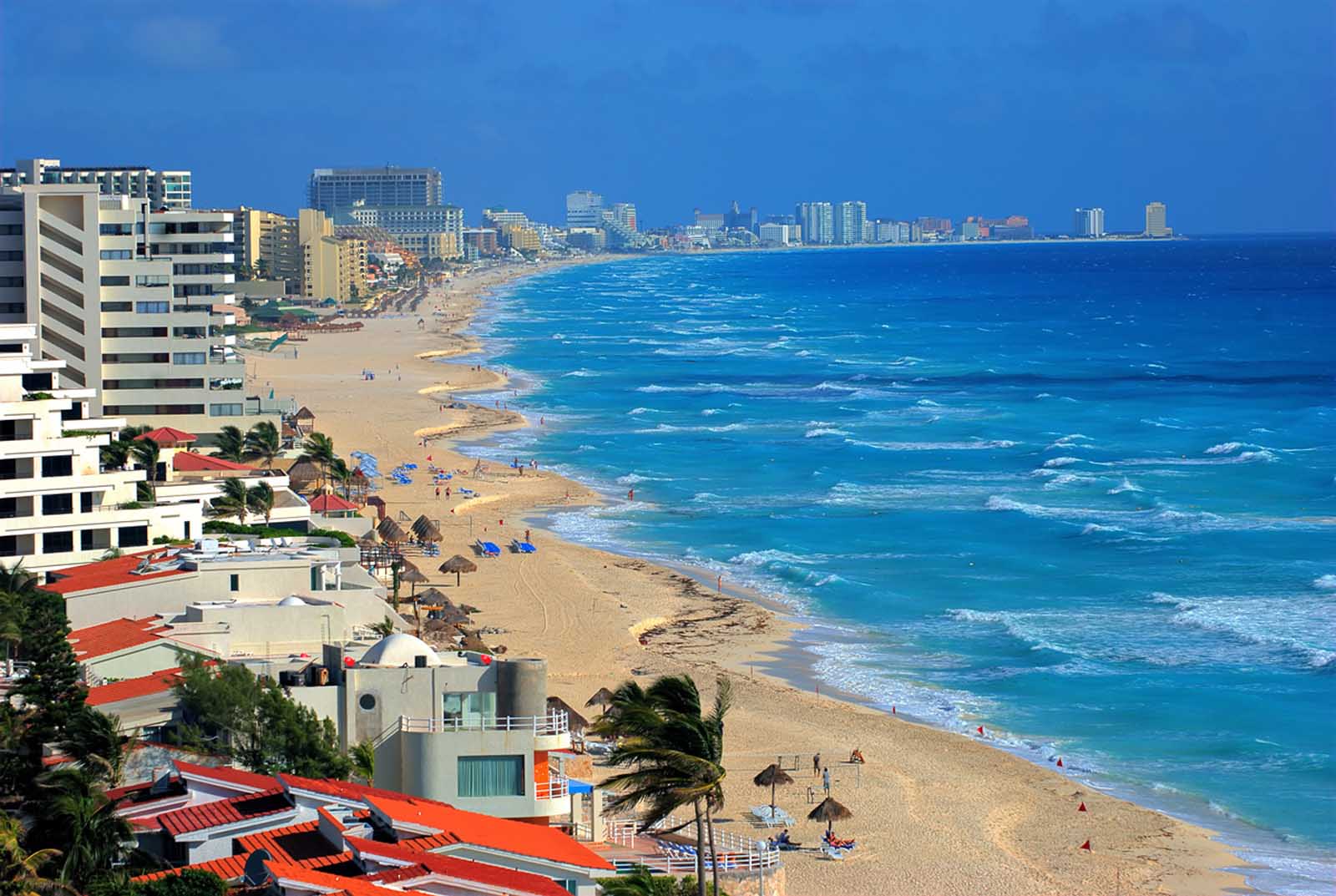
Yes, Cancun and Playa del Carmen on the Caribbean Sea are incredible, but Mexico is so much more than its coastlines. With over 30 UNESCO World Heritage sites, it’s one of the most culturally rich destinations you can visit. Sites range from colonial cities like Guanajuato to natural wonders like the Copper Canyon and the second-largest coral reef near the Yucatan Peninsula. Places like Puebla, Guanajuato, and Mexico City showcase colonial architecture, vibrant street art, and centuries-old cathedrals.
And let’s not forget: Mexico sits in the Ring of Fire, making it home to many volcanoes and frequent seismic activity. It’s a land shaped by fire and time. Travelers tend to make their way out to Mexico for a vacation on the beach but there is so much more.
Mexico’s cultural reach extends to its cuisine, which is recognized by UNESCO as an Intangible Cultural Heritage of Humanity. And it’s not just tacos and tequila. From mole sauces to tamales, every region has its own specialties.
Mexican culture is deeply rooted in history, especially in central Mexico. The recognition of Mexican cuisine as an immaterial world cultural heritage reflects the importance of food in daily life. Dishes like mole and tamales tell the story of indigenous Mexicans and their traditions
It is also home to more than a handful of ancient ruins, the most famous being Chichen Itza and the agave fields of Tequila.
3. Home to the World’s Smallest Volcano
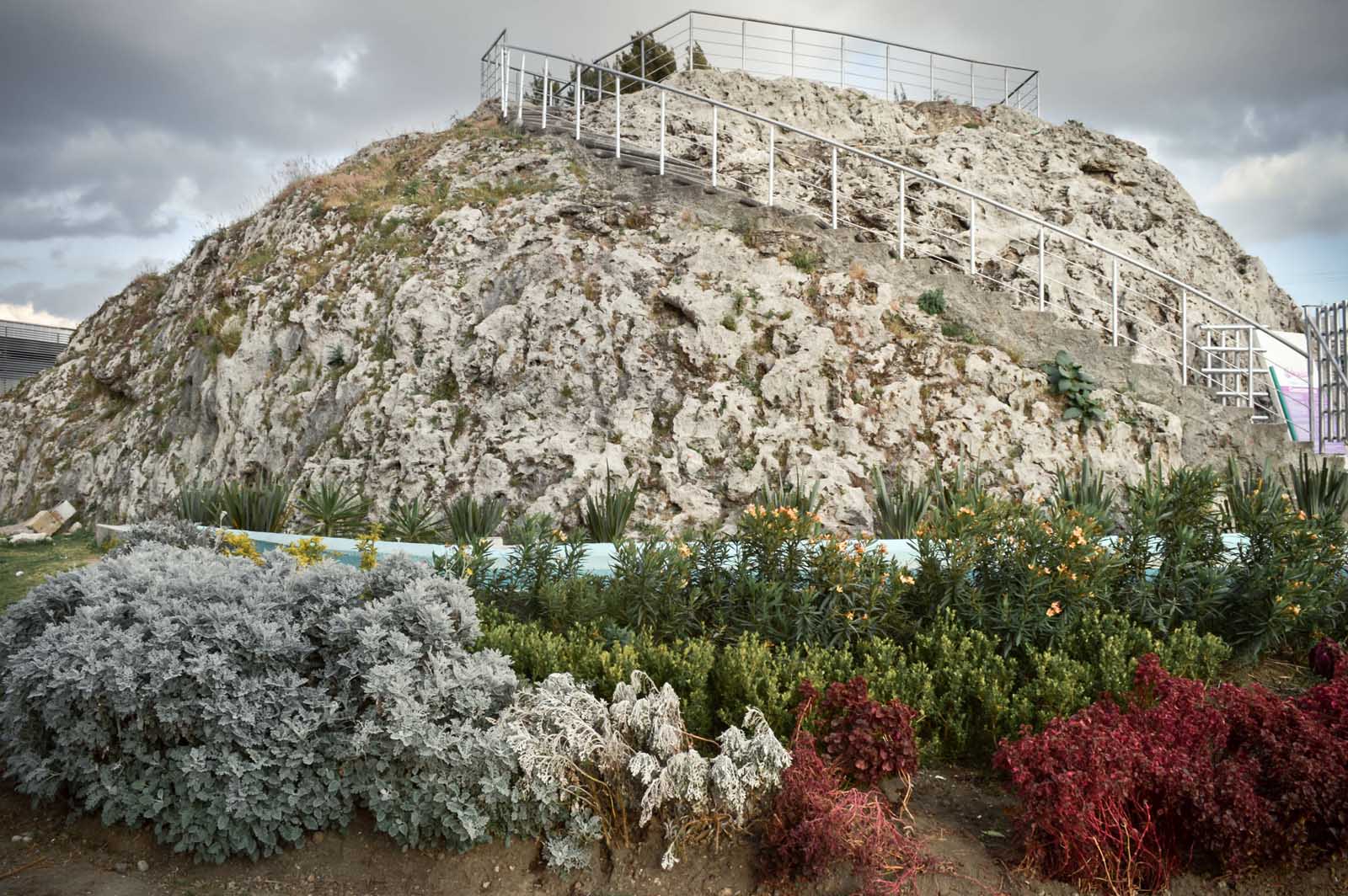
In the city of Puebla in Central Mexico, you’ll find Cuexcomate, which holds the title for the world’s smallest volcano. Standing at just 13 meters (43 feet) high and 23 meters (75 feet) wide at its base, it looks more like a hill than a volcano.
Though often referred to as a volcano, Cuexcomate is technically a dormant geyser or volcanic vent. Legend has it that it was formed when the devil tried to destroy the city but was stopped by divine intervention. Today, it’s a tourist attraction that offers insight into local geology and mythology.
4. The world’s Largest Pyramid is in Mexico
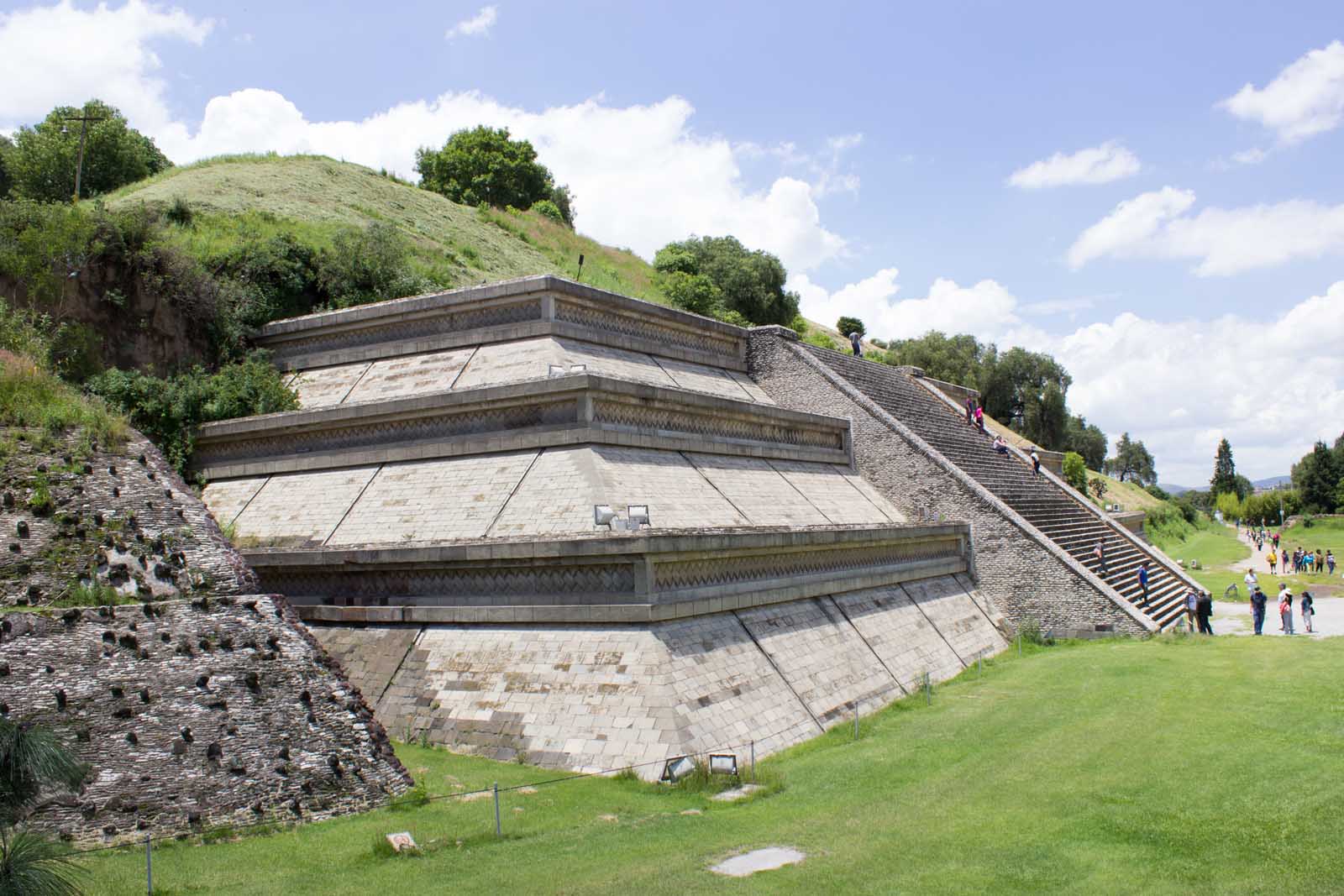
Located near present-day Mexico City in Cholula, the Great Pyramid of Cholula is the largest pyramid in the world by volume
Move over, Giza, the Great Pyramid of Cholula, known in Nahuatl as Tlachihualtepetl (artificial mountain), covers an area of over 45 acres and stands 55 meters (180 feet) tall.
Built in the 3rd century BCE, the pyramid was expanded over centuries by different civilizations including the Olmecs, Maya, and Aztecs. Because it’s covered in vegetation, many visitors mistake it for a hill—until they realize there’s a church sitting on top of it.
This massive structure is a testament to the engineering skills of the ancient culture that built it and reminds us how much Mexican history predates the Spanish conquest.
5. From Jaguars to Chihuahuas

Mexico’s biodiversity is impressive, with an impressive array of animal species. In fact, it’s considered one of the world’s megadiverse countries. Among its unique fauna, Mexico is home to the jaguar, the largest cat in the Americas, which can be spotted in jungles near ancient ruins.
At the other end of the spectrum is the Chihuahua, the smallest dog breed in the world. This tiny pup gets its name from the Mexican state of Chihuahua, where it originated.
From the jaguar to the Chihuahua, biodiversity thrives here. Many of these species live in northern Mexico or the lush jungles of the Yucatan Peninsula.
6. Americans Are Moving to Mexico
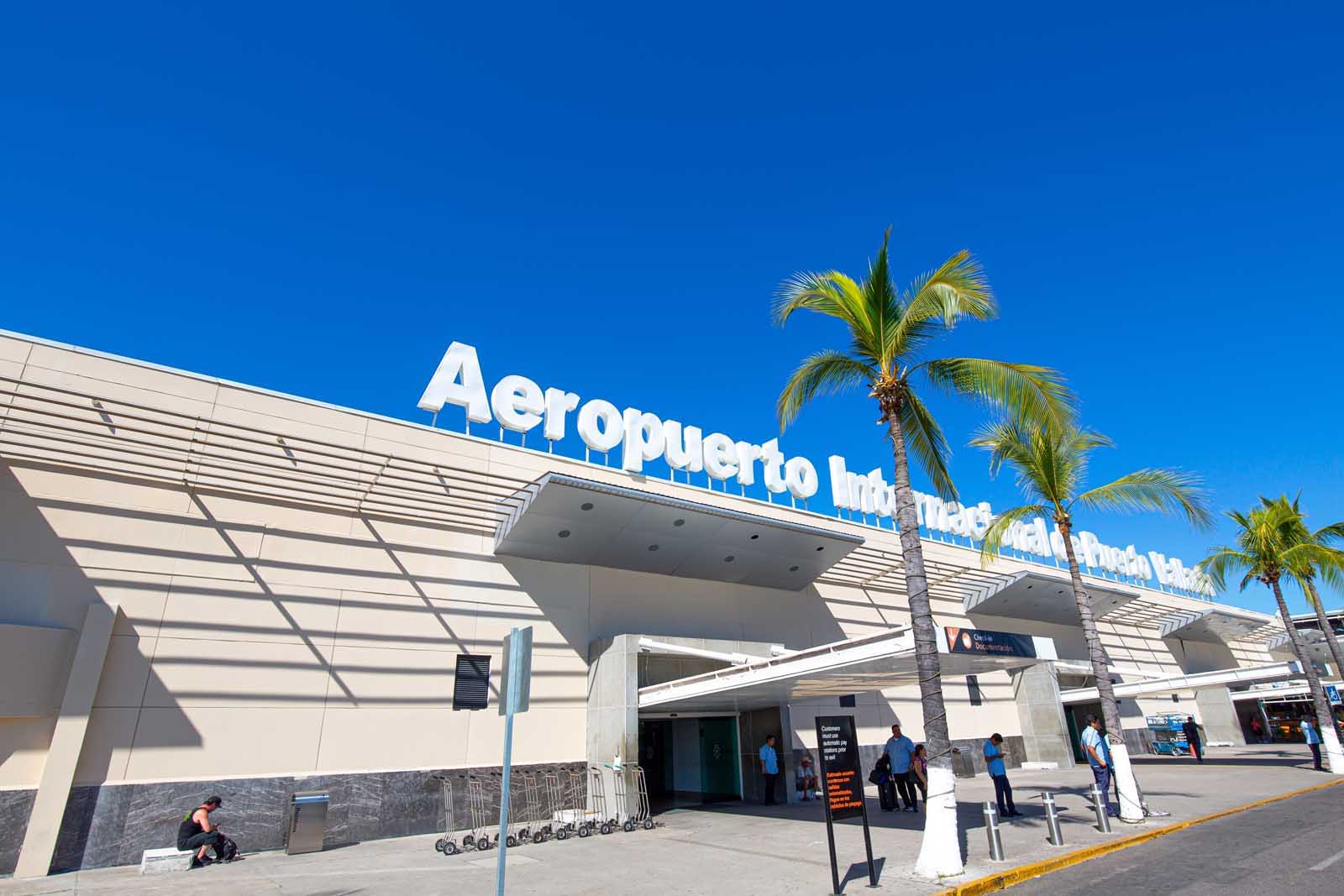
According to the Mexican government, U.S. citizens make up the largest immigrant group in the country. More Americans are moving to Mexico than vice versa, attracted by the cost of living, climate, and quality of life. In fact, Mexico is home to the largest number of American expats in the world.
Many move here for the food, culture, and slower pace of life. But also, for how affordable it is compared to other country destinations. More and more Americans are finding out just how easy it is to visit Mexico and fall in love with it.
7. Thank Mexico For Chocolate
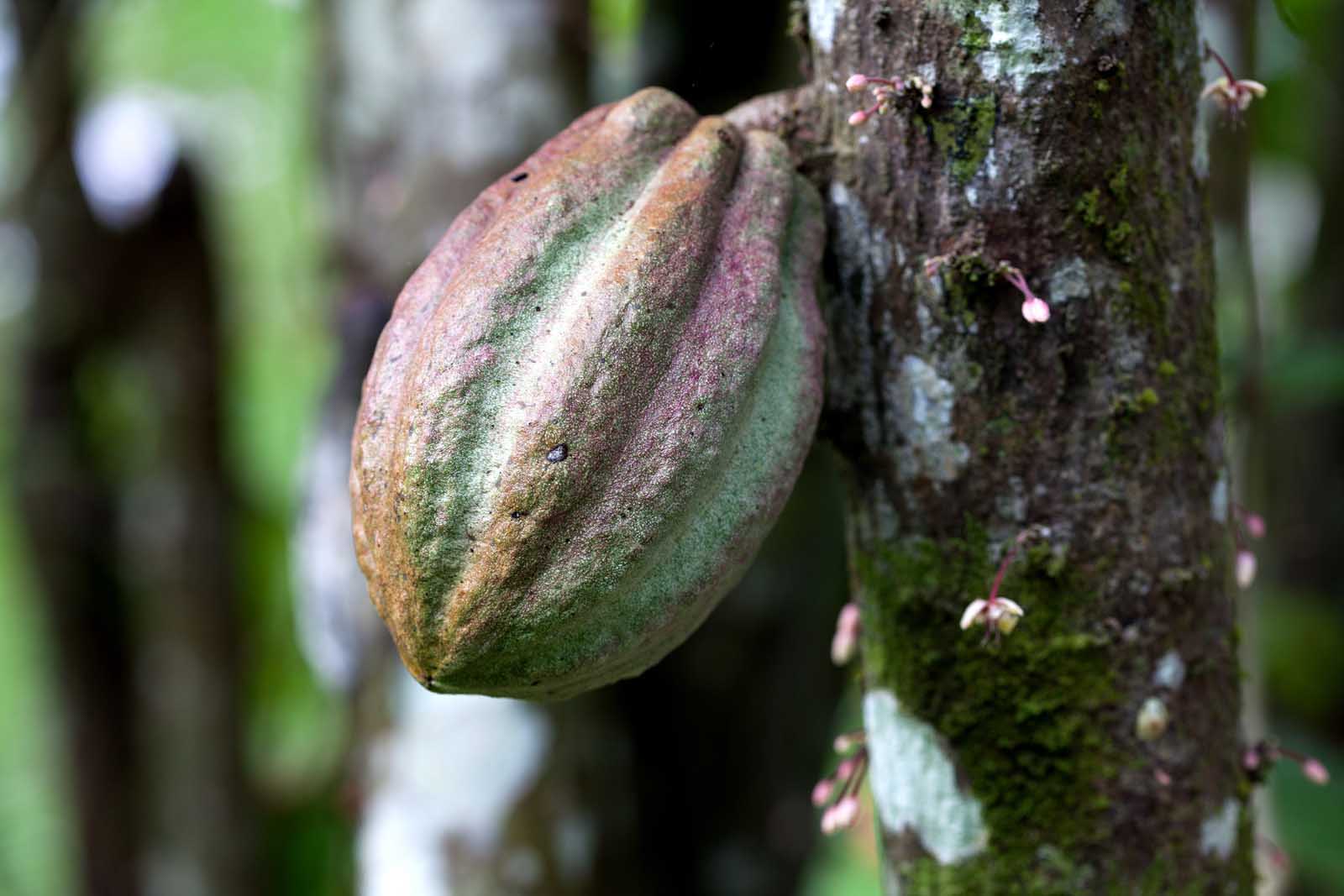
Mexico brought chocolate to the world. The Maya civilization first cultivated cacao, and the Aztec god Quetzalcoatl is credited in legend with gifting it to humanity. It was considered so valuable that it was used as currency before becoming a ceremonial drink.
So, if you are craving chocolate, you can thank Mexico. The cacao plant was first cultivated by Mesoamerican civilizations like the Aztecs and Mayans. They used cacao beans as currency and made a frothy, spiced chocolate drink for ceremonies.
When the Spanish arrived, they brought cacao back to Europe, where sugar was added, giving us the sweet chocolate we know today. But the origins of chocolate are 100% Mexican.
The phrase Mexico brought chocolate isn’t just a fun fact it’s a cultural truth. From ancient times to modern desserts, chocolate remains central to Mexican culture.
8. Avocados, Tomatoes and More Come from Mexico
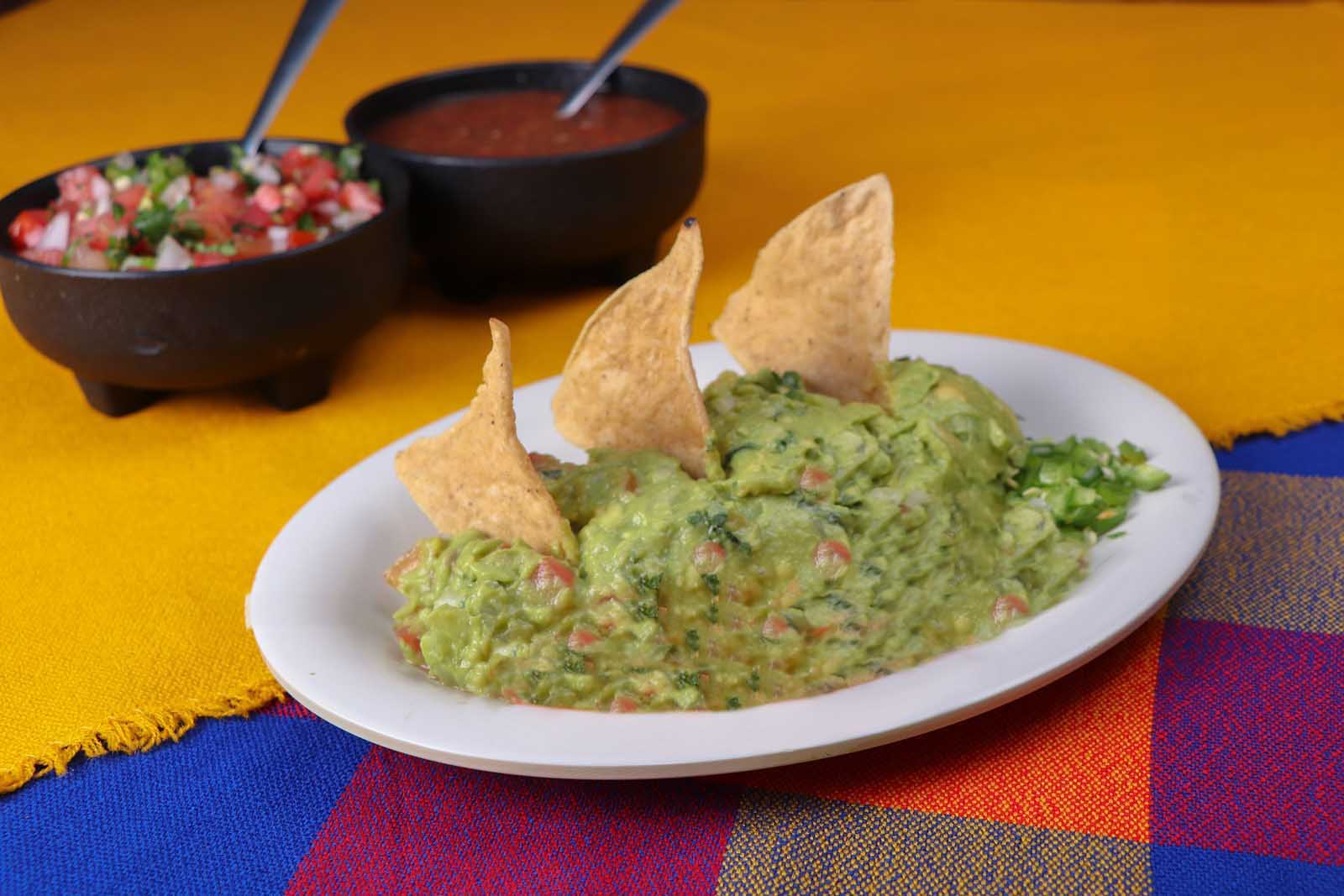
Besides chocolate, Mexico also gave the world avocados, tomatoes, and blue agave, the base for tequila. These are now staples in many kitchens worldwide, yet their roots trace back to indigenous languages and farming traditions.
The word “avocado” comes from the Nahuatl word ahuacatl, and these creamy fruits have been cultivated for over 9,000 years.
Tomatoes, meanwhile, were first domesticated by the Aztecs. The Spanish introduced them to Europe in the 1500s, where they became staples in cuisines around the globe. Today, you can’t imagine Italian pasta or pizza without them.
9. Mexico City Is Sinking
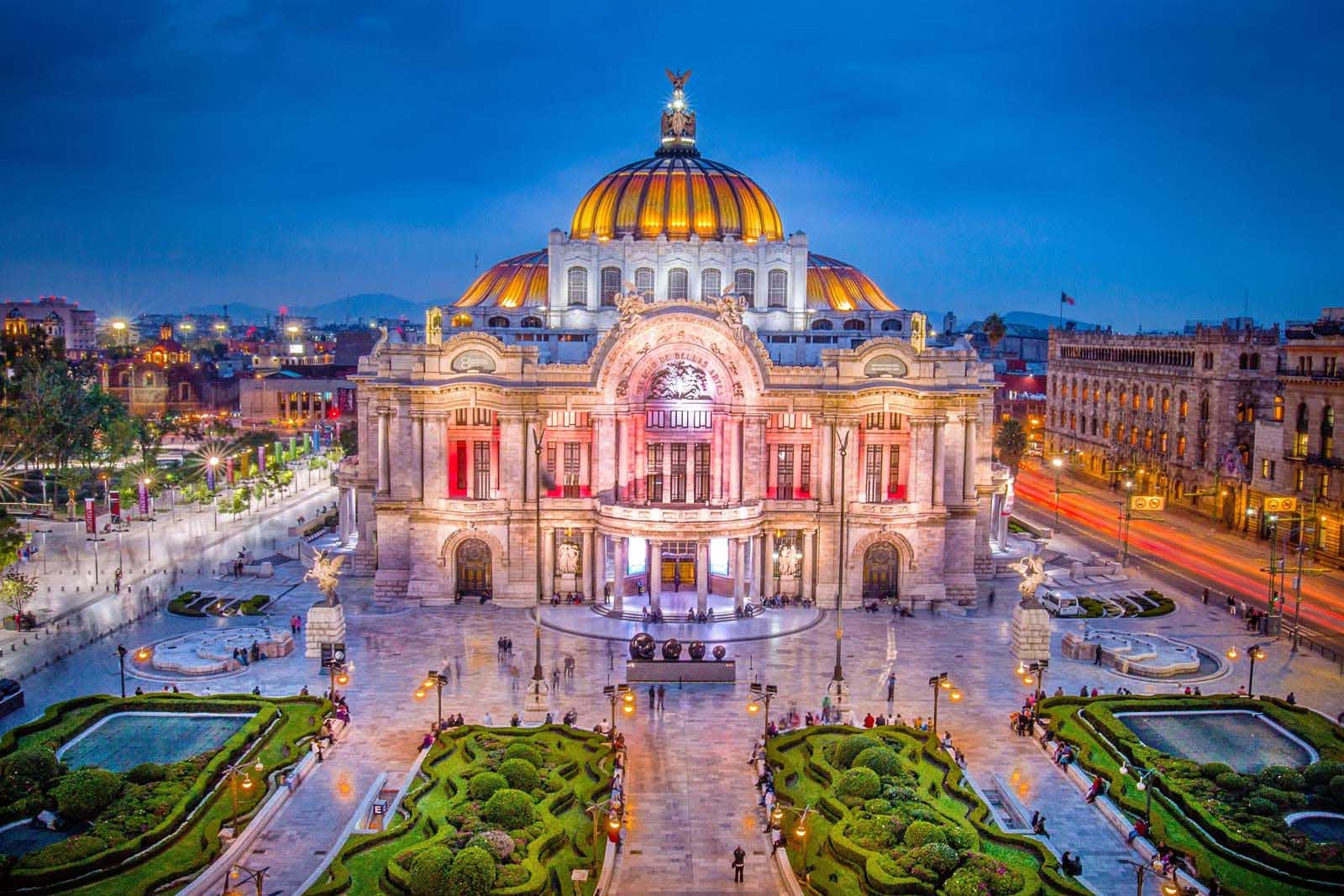
Built on Lake Texcoco, Mexico City is sinking several inches per year. This is due to water extraction from the lakebed. Despite this, Mexico City remains a hub of innovation, art, and history.
The city was constructed atop the ancient Aztec capital of Tenochtitlán, which used canals and dikes to control flooding.
It’s also home to the largest taxi fleet in the world and is famous for being one of the places that consumes more Coca-Cola per capita than anywhere else. Read more: 10 Best Things to Do in Mexico City for an Epic Trip
10. Cinco de Mayo vs. Independence Day
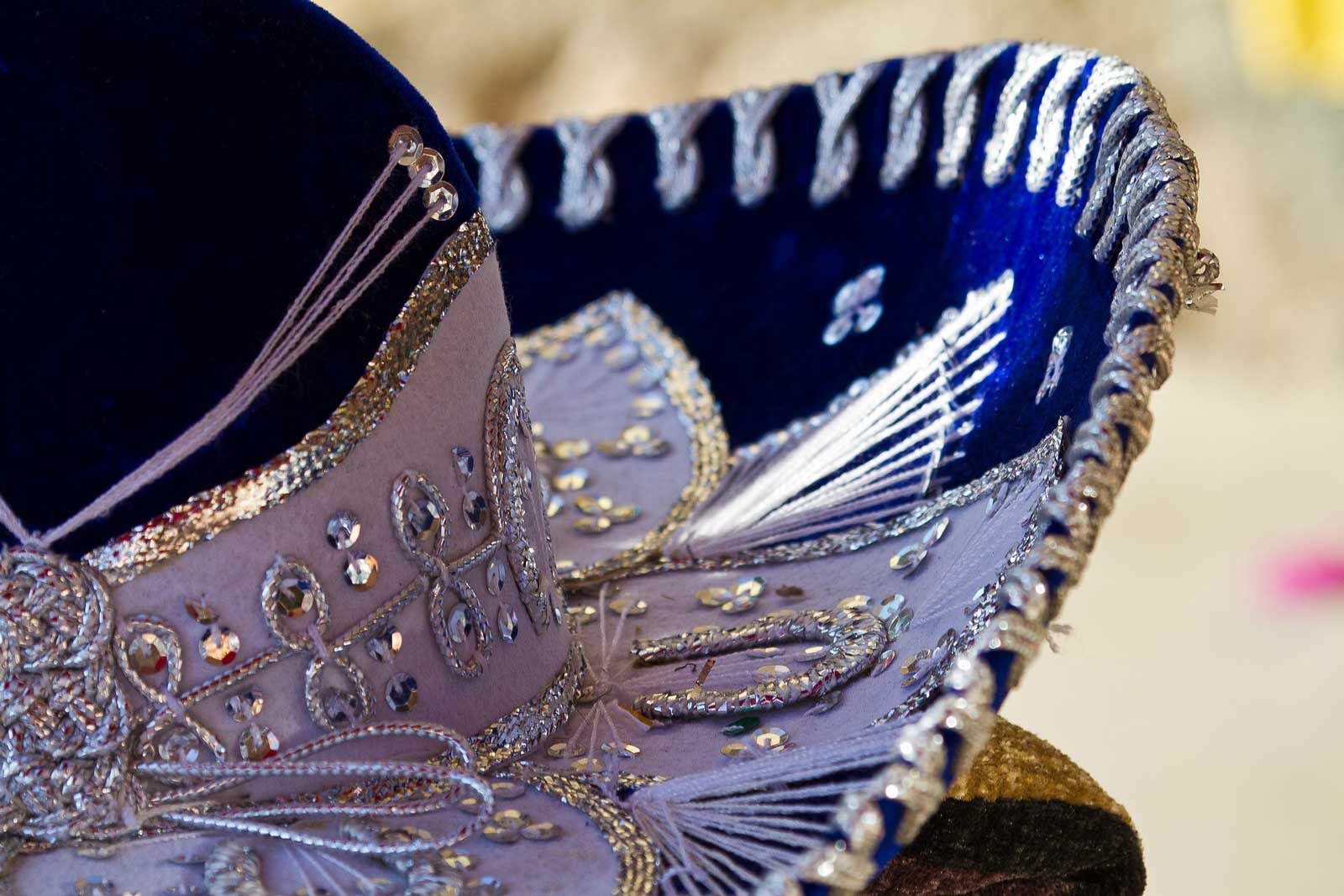
Cinco de Mayo marks the Battle of Puebla in 1862, when a smaller Mexican army defeated the French. While it’s a major celebration in Puebla, it’s not widely celebrated elsewhere in Mexico. The holiday gained traction in the U.S. as a celebration of Mexican-American culture.
Many think Cinco de Mayo is Mexican Independence Day, but that’s incorrect. Mexico celebrates its independence on September 16, in honor of the Grito de Dolores led by Miguel Hidalgo in 1810. That’s September 16, commemorating the start of the Mexican War of Independence in 1810. Cinco de Mayo marks a victory against French forces in the Battle of Puebla.
11. The Holidays Continue with Día de los Muertos
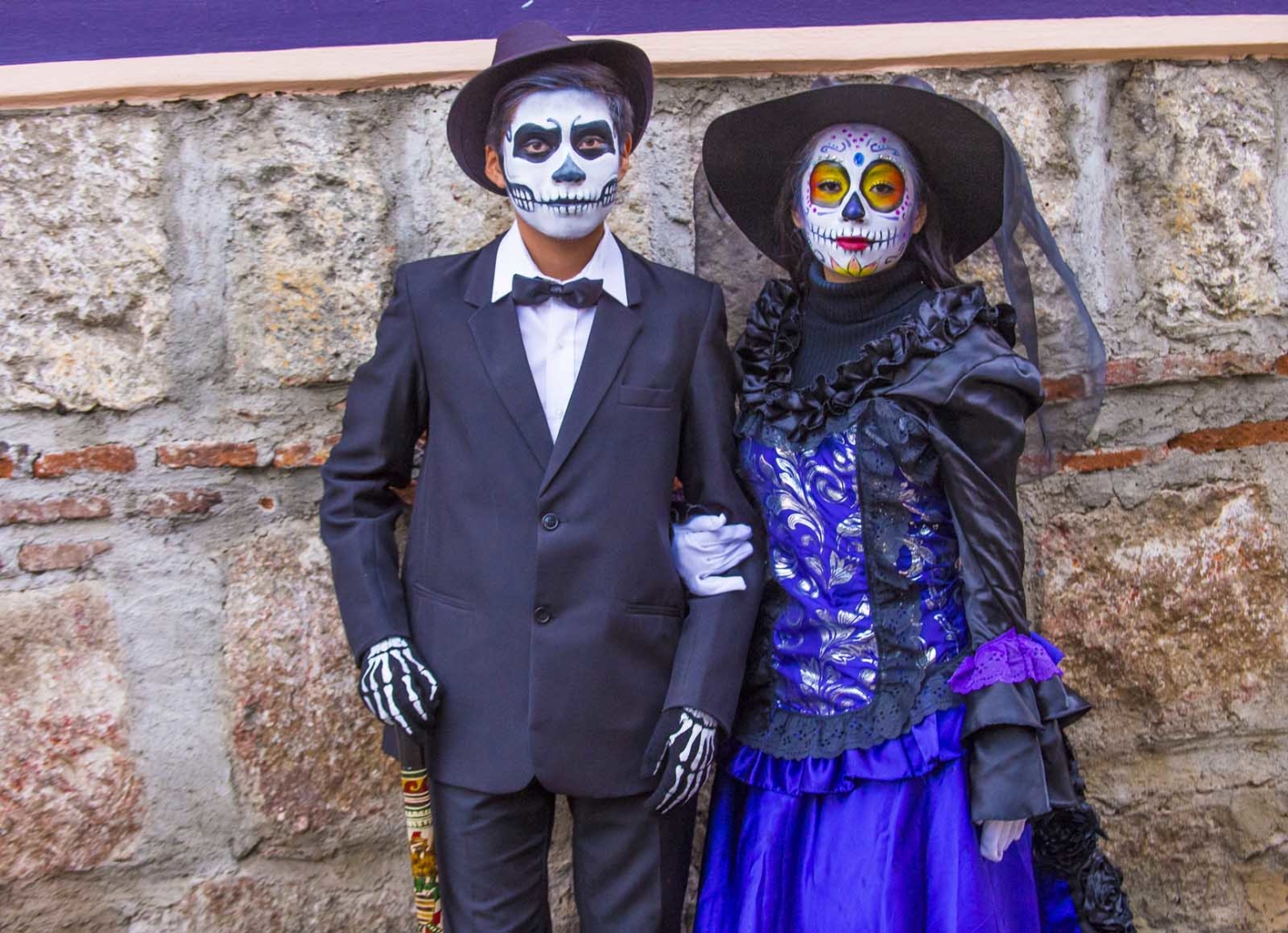
Dia de los Muertos, or Day of the Dead, is one of the most vibrant and vital holidays in Mexico. This celebration honors deceased loved ones and reflects the deeply rooted spirituality of Mexican people.
12. A Legacy in Learning
The Royal and Pontifical University, now known as UNAM, was founded in 1551. It is the oldest in North America. Spanish speakers from all over Latin America come here to study. It’s a national pride and a cornerstone of higher education in Mexico.
When you think of old universities in North America, your first thought may be Harvard. However, the oldest university in North America is actually the National Autonomous University of Mexico (UNAM), which is located in the capital city of Mexico City. It was founded in 1551, 85 years before Harvard was.
13. Color TV Came From Mexico
Guillermo González Camarena invented the color television transmission system. It was first used in Mexico before being adopted by other countries. This is one of the most overlooked yet impressive Mexican inventions.
14. The Artistic Soul of Mexico
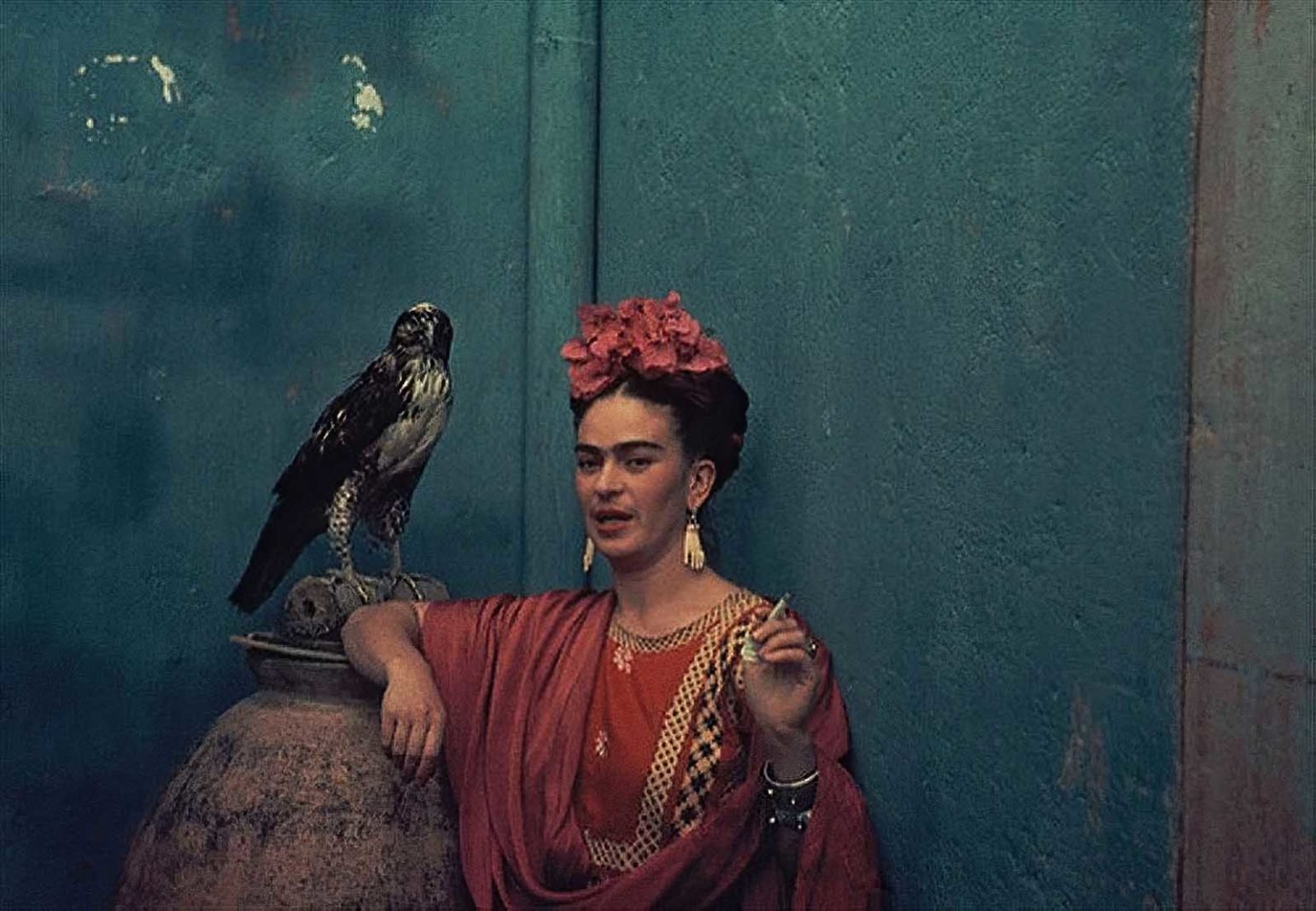
Mexican culture is known for its colorful expressions through art, and no one represents this better than Frida Kahlo. Her paintings are deeply symbolic and reflect the indigenous and mestizo experience in Mexico. Her home in Mexico City, La Casa Azul, is now a museum that honors her work and her role in shaping national identity. This museum is one of the many cultural stops for those who visit Mexico seeking to understand its creative legacy.
From murals by Diego Rivera to vibrant street art in every historic city, art is an essential part of life in present-day Mexico City and throughout the country. Many Mexicans express their values and identity through these artistic traditions that began during the colonial period and continue to evolve today.
15. Mexico and Its Indigenous Heritage
Mexico is home to dozens of indigenous languages still spoken today. These languages trace back to groups like the Maya civilization and the Nahua peoples. Understanding these linguistic and cultural roots helps reveal why Mexico is not just another country in Central America, but a cradle of ancient knowledge.
The national languages of Mexico include both Spanish and these native tongues. In fact, Mexico has the most Spanish speakers of any country in the world, and yet it also preserves a wide array of indigenous voices.
16. Land of Natural Wonders
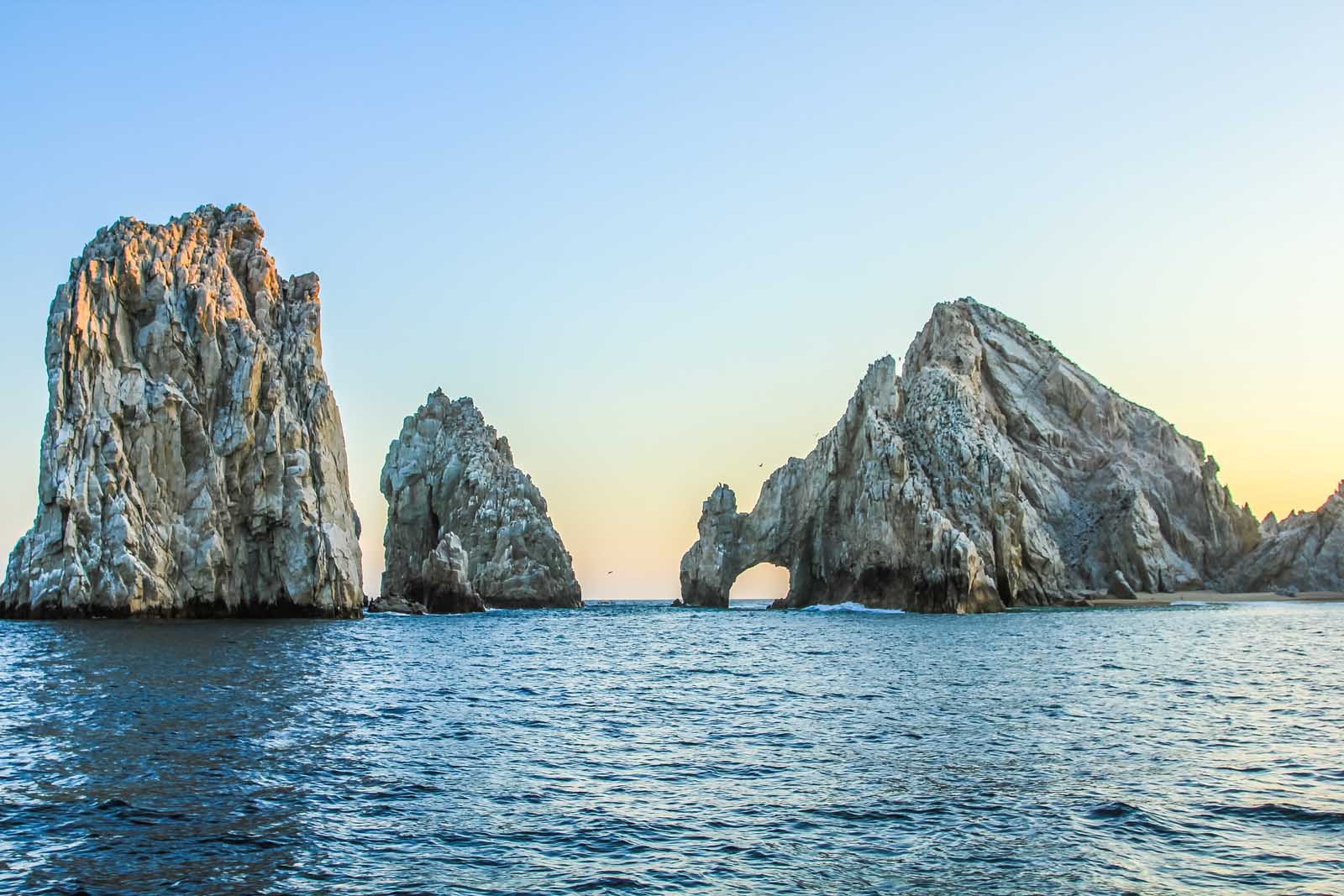
Mexico is home to incredible landscapes, from the Copper Canyon to Baja California’s deserts. The Yucatan Peninsula features underground rivers and cenotes, while the surrounding Caribbean Sea boasts part of the second largest barrier reef system in the world.
Many travelers are surprised to learn that Mexico also shares the Sonoran Desert with Arizona and has canyons deeper than the Grand Canyon. These natural features are a source of pride and are protected in several UNESCO world heritage sites.
17. Celebrations That Go Beyond Borders
From the Mexican Revolution to Día de los Muertos, Mexico celebrates its past with festivals and holidays full of symbolism. The Mexican flag, with its iconic eagle eating a snake on a cactus, tells the myth of how the Aztecs founded what is now Mexico City.
Each celebration, whether Independence Day or a local festival, showcases the blend of indigenous traditions and colonial influences. These events help keep alive the customs that make Mexican culture Mexico’s most powerful expression.
18. A Global Voice
Mexico is a major player in global affairs and shares its culture with the world. Whether through food, music, or language, its influence reaches far beyond North America. Many Mexicans have settled abroad, and Mexico is home to a large number of foreign residents, including digital nomads and retirees.
In contrast to cities like Buenos Aires, Mexico City thrives as a dynamic center of finance, art, and politics. With more Spanish speakers than any other country, and a population passionate about heritage, Mexico stands out globally.
19. Chichen Itza: Wonder of the World
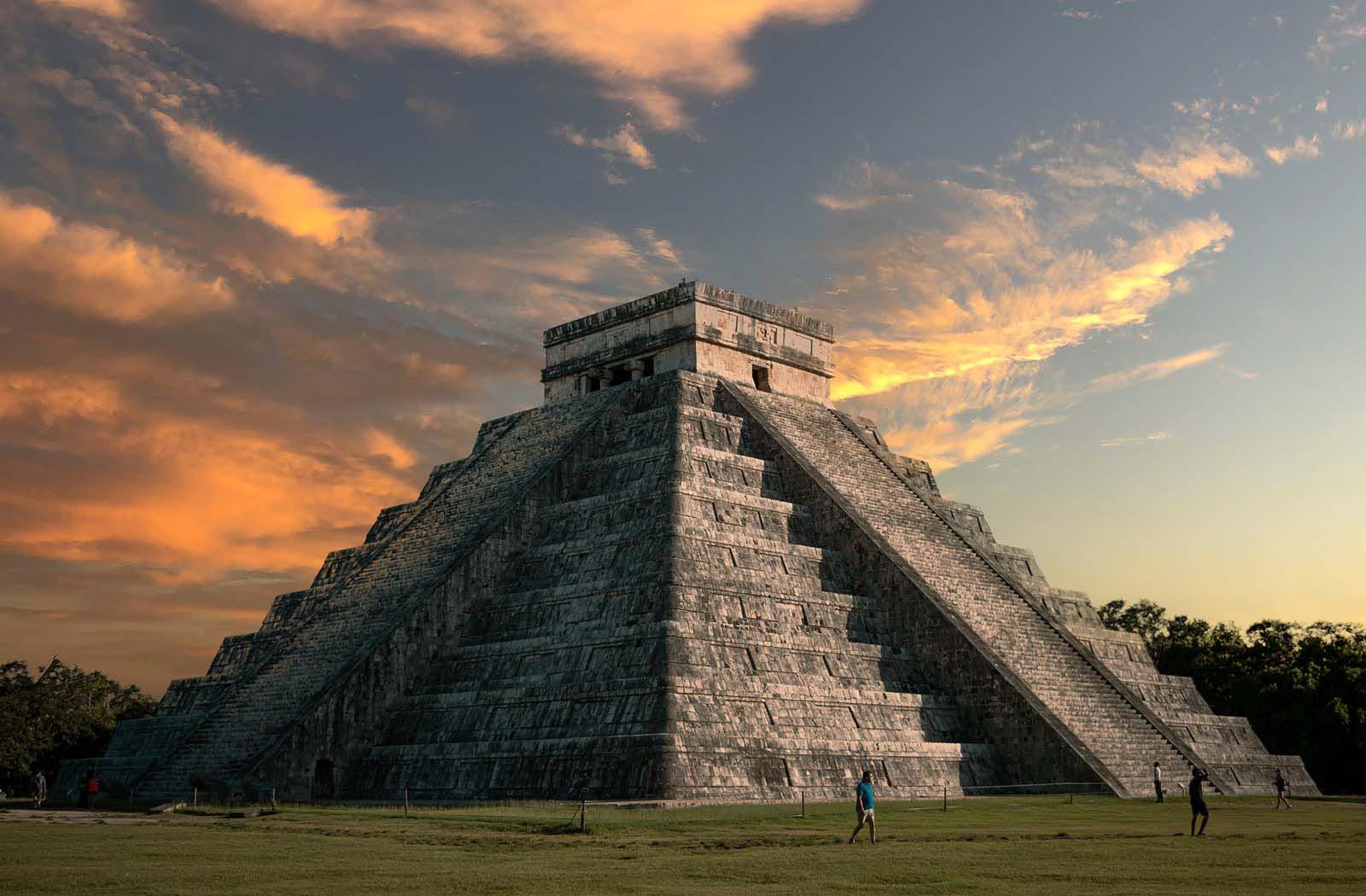
Chichen Itza, located on the Yucatan Peninsula, is one of the seven wonders of the modern world. This ancient site reveals the incredible knowledge held by the Maya in astronomy, engineering, and architecture. The Temple of Kukulkan, also known as El Castillo, is the most famous pyramid at the site.
Visiting Chichen Itza is a must for anyone who wants to explore the depth of Mexican history and experience the legacy of an ancient culture.
20. A Country of Firsts and Records
Besides being the birthplace of chocolate and the color television transmission system, Mexico holds many other records. It has the largest city in North America, produces more Coca-Cola per capita than almost any other country, and has the largest taxi fleet.
The Great Pyramid of Cholula is still the largest by volume, and the traditions of its indigenous peoples continue to shape daily life.
21. Mexico: A Place Worth Exploring
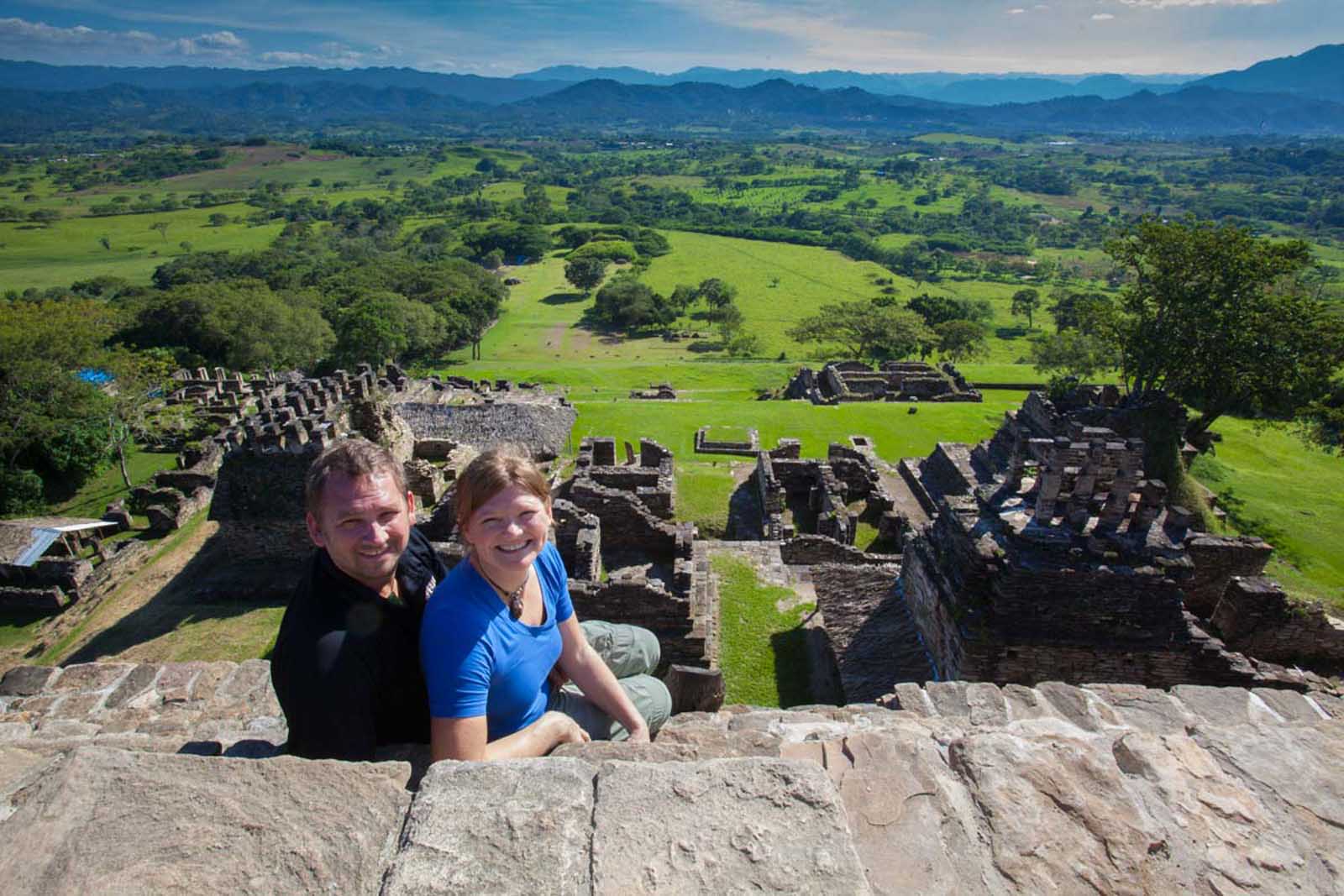
These fun facts about Mexico are just the beginning. Mexico is a place of deep contrast and rich tradition. From the colonial period to modern times, it has remained a beacon of culture and community.
With a blend of ancient ruins, natural wonders, and vibrant modern cities, it’s no surprise that more and more travelers are choosing to visit Mexico. Whether you’re drawn to the coast of Baja California, the heart of central Mexico, or the rainforests of the south, you’ll find a country that welcomes curiosity and rewards it with beauty.
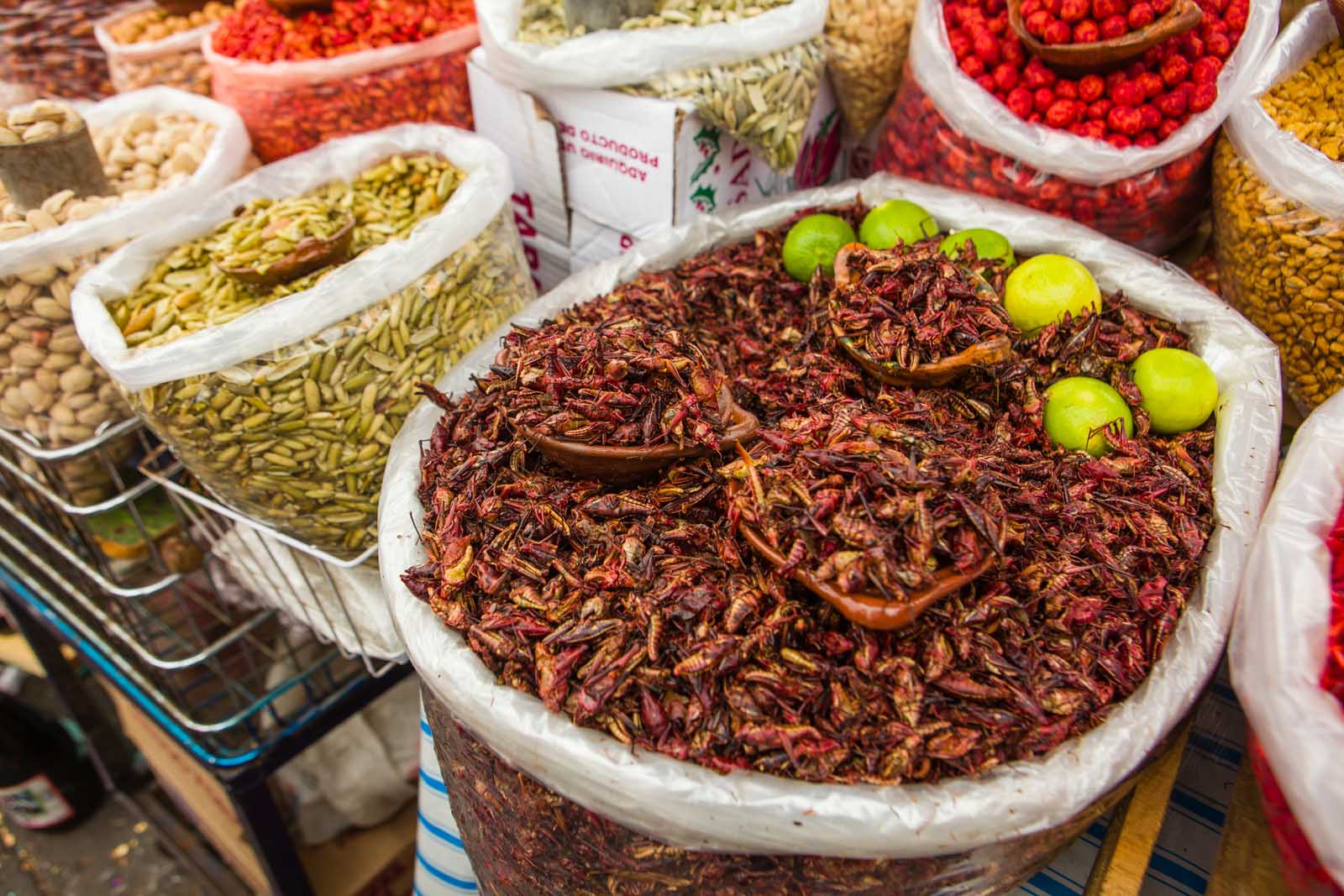
Many foodies travel to Mexico for authentic Mexican cuisine. The most adventurous of foodies may stroll through a market and buy grasshoppers, scorpions, and spiders to enjoy during their next meal. This may be a horrifying sight for the average joe, but some of these crawly critters have great flavor. Why else would you find the people of Mexico selling them for consumption?
If you can get over the oddness of eating bugs, you’ll find some tasty treats that are high in protein and, of course, are organic. There are tons of edible insects in Mexico to choose from.
It wasn’t meat that got the Aztecs through the day, it was fat-free bugs they found roaming the grounds. If you are feeling risky, sample a delicious critter during your travels in Mexico.
22. Facts About the Mexican Flag
The Mexican flag is one of three National Symbols of Mexico. It consists of three vertical stripes of equal width. The colors of the flag, from left to right, are green, white, and red. “Verde,” “Blanco,” and “Rojo.” The Mexican flag was first adopted on February 24, 1821.
In the center of the white stripe, there is Mexico’s national emblem, known as the “Mexican Coat of Arms” or “Escudo Nacional.” It features an eagle perched on a cactus with a snake in its beak. This emblem represents the legend of the founding of Tenochtitlan, the ancient Aztec capital, which later became present-day Mexico City. The symbolism within the emblem invites readers to explore more about this unique civilization and its mythological elements.
Each color on the Mexican flag holds specific symbolism. Green represents hope and independence, white symbolizes purity and religion, and red stands for the bloodshed by those who fought for Mexico’s independence.
Record-Breaking Flag: In 2010, Mexico set a Guinness World Record for the largest flag ever flown. The enormous flag, measuring 2,011 meters long, was displayed in celebration of the country’s bicentennial.
23. Mexico is one of the Cradles of Civilization
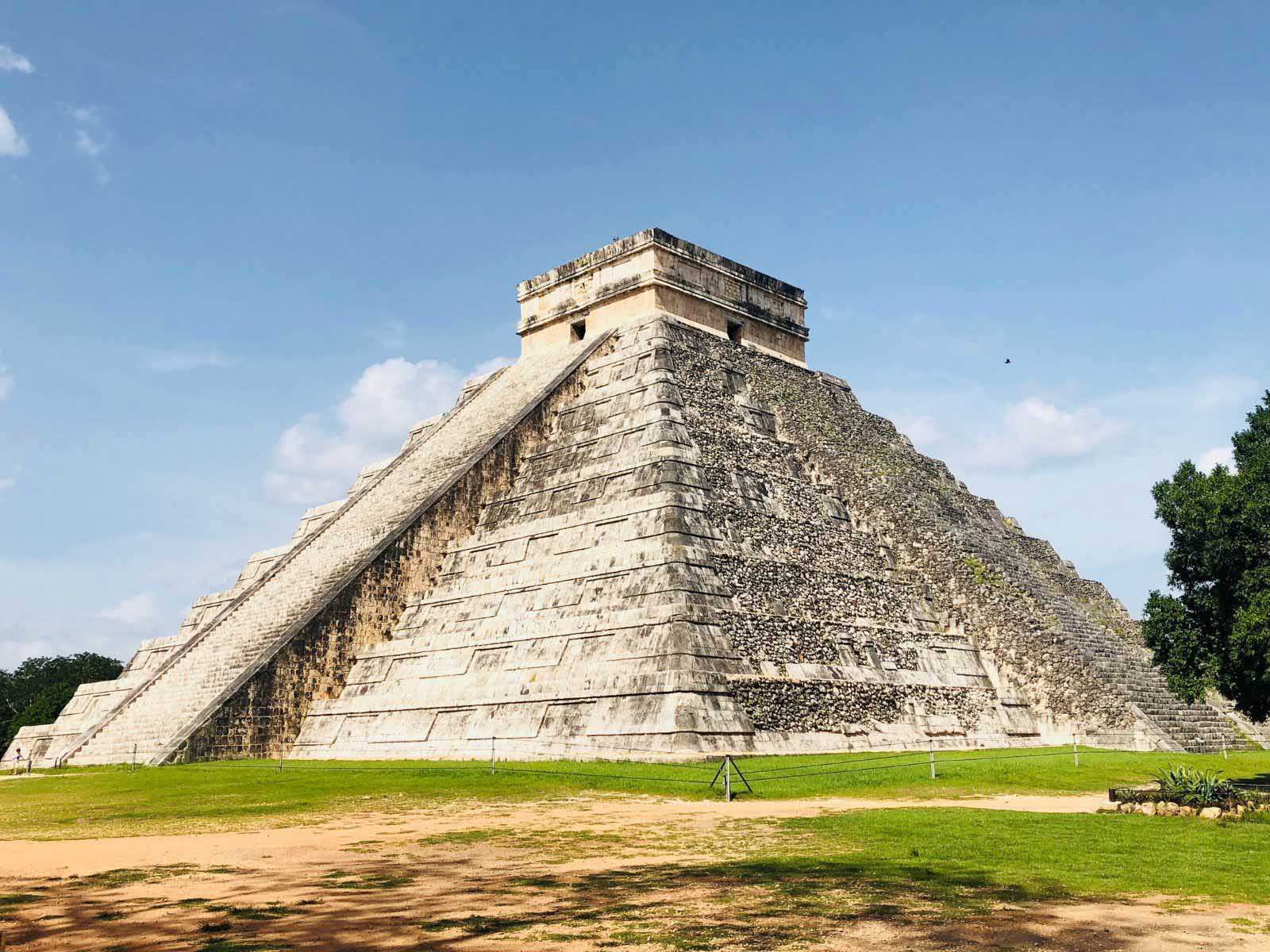
Mexico has been around since 8000 – 12000 BC. We all know about the Mayans and Aztecs, but fewer know about the Toltec Civilization. The Toltecs were a pre-Columbian Mesoamerican civilization considered one of the great civilizations of ancient Mexico, and their influence was widespread in what is now central Mexico.
The Toltecs were an organized and urban society. They had a hierarchical society with a king at the top, nobility, priests, and commoners. The Toltec state was ruled by a king and had a warrior class.
The reasons for the fall of the Toltec civilization are still unknown. Some say internal conflict, others environmental factors or external invasions. Around the 12th century, Tula was abandoned, and the Toltec state fell. However, the Toltecs left a big cultural and artistic legacy to the Mesoamerican civilizations that followed, including the Aztecs.
24. The Spanish Ruled Mexico for 300 Years
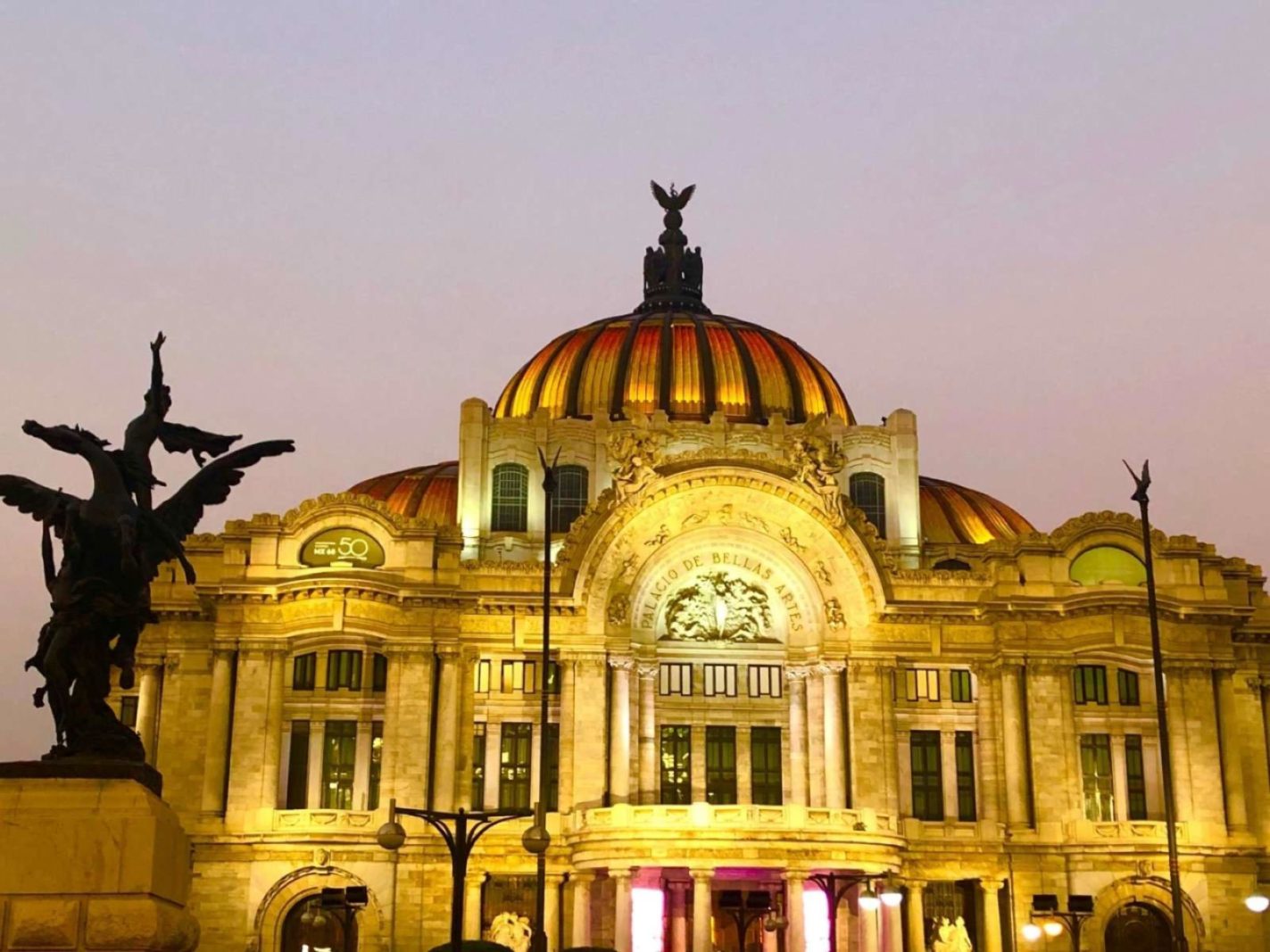
The Spanish rule of Mexico as New Spain lasted almost 300 years, from the 16th to the 19th century. Hernán Cortés arrived in Mexico in 1519 and, by 1521, had defeated the Aztec Empire led by Moctezuma II. That was the start of Spanish colonial rule in Mexico.
In 1535, New Spain was established as a viceroyalty of the Spanish Empire. The capital of the viceroyalty was Mexico City (formerly Tenochtitlan). New Spain included what is now Mexico, Central America, and part of the southwestern US.
On September 27, 1821, the Mexican War of Independence ended with the signing of the Plan of Iguala, and Mexican independence was won. Agustín de Iturbide was the first Mexican emperor, but Mexico became a republic.
Mexico’s Fascinating Facts
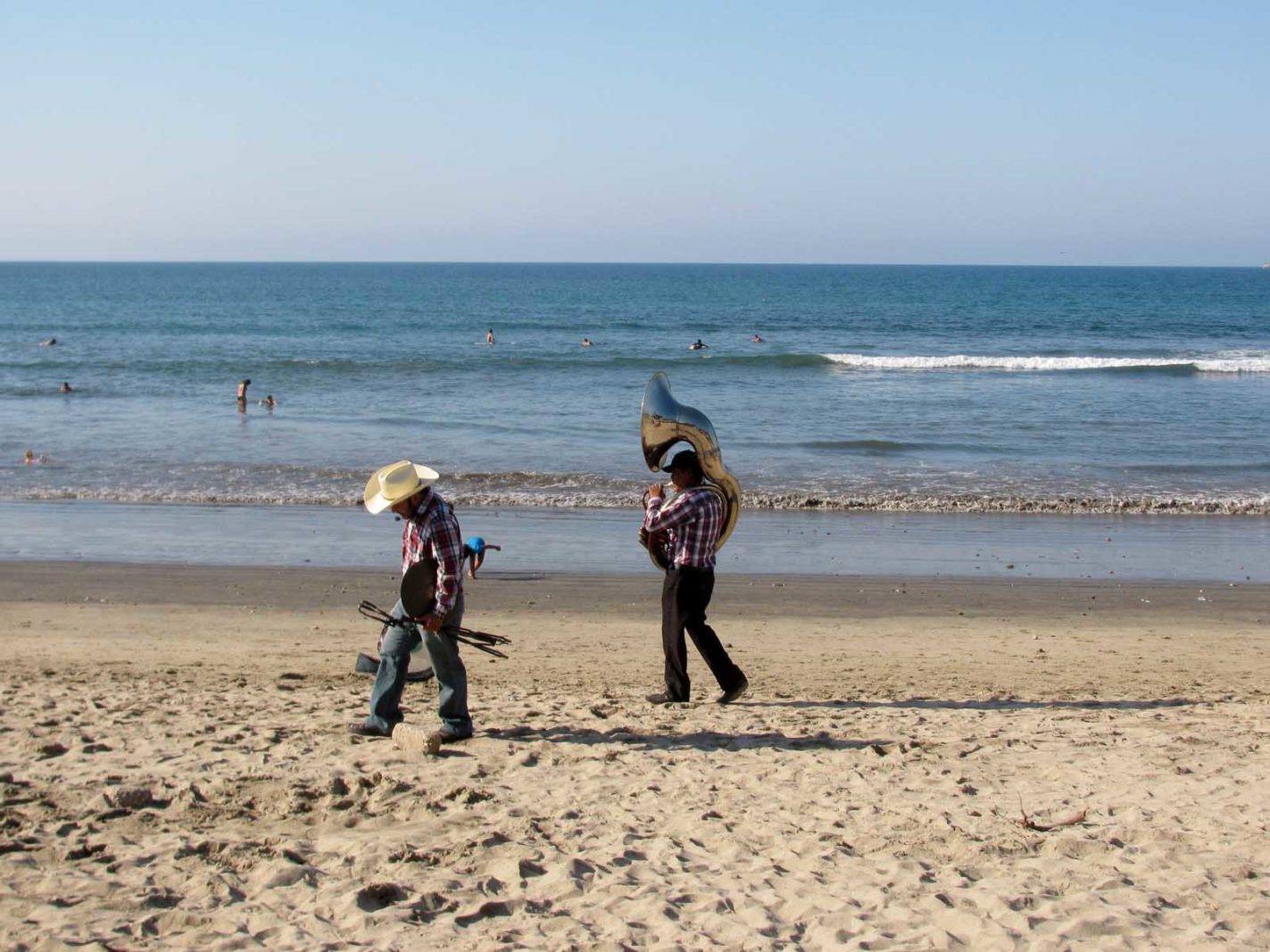
From the world’s largest pyramid and smallest volcano to the invention of color TV and the birthplace of chocolate, Mexico is overflowing with fascinating facts that go way beyond beach resorts.
This colourful country of Latin America is a land of UNESCO World Heritage Sites, and contrasts: ancient yet modern, spiritual yet vibrant, traditional yet innovative. Whether you’re planning your first trip or your fifth, remember — there’s always something new to discover in Mexico.
Now that you know these incredible facts about Mexico, which one surprised you the most?
What is Mexico most known for culturally?
Mexico is known for its vibrant culture that blends indigenous traditions with Spanish influences. Highlights include Día de los Muertos, Frida Kahlo’s art, mariachi music, and its UNESCO-recognized cuisine.
Is Mexico in Central America or North America?
Geographically, Mexico is part of North America. While it shares historical and cultural ties with Central America, it borders the U.S. to the north and is officially classified as a North American country.
What are three fun facts about Mexico?
- Mexico City is built on a lake and is slowly sinking.
- Mexico is home to the world’s smallest volcano (Cuexcomate) and the largest pyramid by volume (Cholula).
- Mexico has the most Spanish speakers of any country in the world.
Why is Chichen Itza so famous?
Chichen Itza is a UNESCO World Heritage Site and one of the New Seven Wonders of the World. It showcases the astronomical, architectural, and mathematical achievements of the Maya civilization.
What is the meaning of the eagle eating a snake on the Mexican flag?
The emblem symbolizes an Aztec legend. The gods instructed the Aztecs to build their city where they saw an eagle eating a snake on a cactus—today’s location of Mexico City.
When is Mexican Independence Day
Mexican Independence Day is celebrated on September 16 each year.
It commemorates the start of the Mexican War of Independence in 1810, when Miguel Hidalgo issued the famous Grito de Dolores, calling for the end of Spanish rule.
Read Next: 36 Best Places To Visit in Mexico in 2025

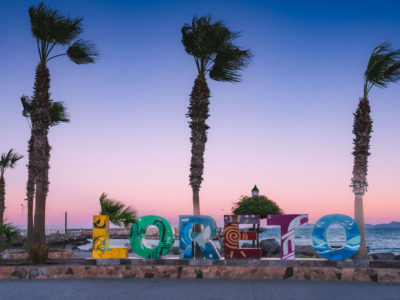
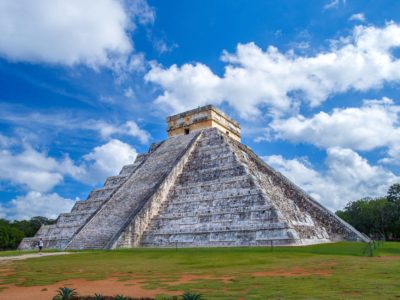
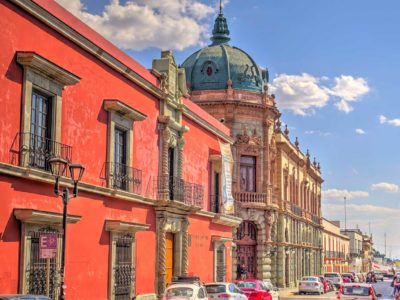
These fun facts about Mexico are so interesting! I didn’t know some of these, like how Mexico is home to the oldest university in North America. Definitely making me want to learn more about this beautiful country!
Amazing experience. We are planning to travel after this pandemic and Mexico is one on our list.
Thanks for sharing.
awesome fun facts about Mexico. thanks for sharing funny travel experience with us.